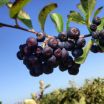(Press-News.org) Anyone who has seen the movies of Neil Armstrong's first bounding steps on the moon couldn't fail to be intrigued by his unusual walking style. But, contrary to popular belief, the astronaut's peculiar walk was not the result of low gravity. Wyle Science, Engineering and Technology scientist John De Witt explains that the early space suits were not designed for walking, so the astronauts adapted their movements to the restrictions of the suit. Michael Gernhardt, the head of NASA's Extravehicular Activity Physiology, Systems and Performance Project, wants to learn more about how humans move in low gravity, including the speed at which we break from a walk into a run, to design a modern space suit that permits freer movement. However, the only way to test the effects of true lunar gravity on our movements while based on earth is to hop aboard NASA's adapted DC-9 aircraft – which reduces the gravity on board by performing swooping parabolic flights – and get running. De Witt and his colleagues publish their discovery that astronauts will remain walking at higher speeds on the moon than had been previously thought in The Journal of Experimental Biology at http://jeb.biologists.org.
To make this discovery, De Witt and colleagues Brent Edwards, Melissa Scott-Pandorf and Jason Norcross recruited three astronauts and five other registered test subjects that could tolerate the discomfort of the aircraft's bucking flight to test their running. 'There is some unpleasantness,' recalls De Witt, adding, 'if you get sick you're done…. We wanted to be sure we had people that were used to flying.' Once the subjects were airborne, the team only had 20s during each roller-coaster cycle – when the gravity on-board fell to one-sixth of that on Earth – when they could test the runner's walking and running styles on a treadmill as the volunteers shifted over a range of speeds from 0.67 to 2m/s. However, De Witt recalls that the experiments ran smoothly once the team had settled into a routine after the first few parabolas.
Back on the ground, De Witt and colleagues analysed the speed at which the walkers gently transitioned into a run. 'Running is defined as a period of time with both feet off the ground', explains De Witt, adding that the walk to run transition was expected to occur at 0.8m/s in lunar gravity, based on theoretical calculations. However, when the team calculated the transition speed from their experiments, they were in for a surprise: 'The average was 1.4m/s', recalls De Witt.
'This difference is, to me, the most interesting part of the experiment; to try to figure out why we got these numbers', says De Witt, who suggests that the acceleration forces generated by the counter-swinging arms and legs could account for the shift in transition speed. 'What I think ends up happening is that even though the atmosphere is lunar gravity, the effective gravity on our system is lunar gravity plus the forces generated by our swinging arms and legs', says De Witt. He explains that this arm-and-leg swinging effect probably happens here on Earth too, but the forces generated by the swinging limbs are negligible relative to our gravity. However, he suspects that they are more significant in weaker lunar gravity, saying, 'They contribute more to the gravity keeping you attached to the ground.'
De Witt also adds that the higher transition value is not without precedent. He explains that scientists on Earth have simulated lunar gravity by supporting five-sixths of a runner's weight in a sling, and the athletes also transitioned from a walk to a run at speeds of around 1.4m/s1. 'This tells researchers [that] what they have in the lab, which is a fraction of the cost of the airplane, is probably adequate at giving you the information you need', he says.
INFORMATION:
IF REPORTING THIS STORY, PLEASE MENTION THE JOURNAL OF EXPERIMENTAL BIOLOGY AS THE SOURCE AND, IF REPORTING ONLINE, PLEASE CARRY A LINK TO: http://jeb.biologists.org/content/217/18/3200.abstract
REFERENCE: De Witt, J. K. , Edwards, W. B. , Scott-Pandorf, M. M., Norcross, J. R. and Gernhardt, M. L. (2014). The preferred walk to run transition speed in actual lunar gravity. J. Exp. Biol. 217, 3200-3203.
This article is posted on this site to give advance access to other authorised media who may wish to report on this story. Full attribution is required, and if reporting online a link to jeb.biologists.com is also required. The story posted here is COPYRIGHTED. Therefore advance permission is required before any and every reproduction of each article in full. PLEASE CONTACT permissions@biologists.com
THIS ARTICLE IS EMBARGOED UNTIL WEDNESDAY, 17 September 2014, 18:00 HRS EDT (23:00 HRS BST)
Lunar explorers will walk at higher speeds than thought
2014-09-18
ELSE PRESS RELEASES FROM THIS DATE:
Wild berry extract may strengthen effectiveness of pancreatic cancer drug
2014-09-18
A wild berry native to North America may strengthen the effectiveness of a chemotherapy drug commonly used to treat pancreatic cancer, reveals research published online in the Journal of Clinical Pathology.
The study by researchers at King's College Hospital and the University of Southampton suggests that adding nutraceuticals to chemotherapy cycles may improve the effectiveness of conventional drugs, particularly in hard to treat cancers, such as pancreatic cancer.
The team tested the effectiveness of extract of chokeberry (Aronia melanocarpa) in killing off cancer ...
Violence rates can be halved in just 30 years, say leading experts
2014-09-18
New evidence will be presented at the first Global Violence Reduction Conference in Cambridge this week which shows that homicide rates have been declining since the mid-1990s in many parts of the world - in some cases dramatically.
Nations as diverse as Estonia, Hong Kong, South Africa, Poland, and Russia have seen average recorded homicide rates drop by 40% or more in the course of just 15 years. Out of 88 countries where trend data could be found, 67 showed a decline and only 20 showed an increase between 1995 and 2010, a new analysis of data from the United Nations ...
The Lancet Haematology: PET-CT predicts lymphoma survival better than conventional imaging
2014-09-18
Positron emission tomography/computed tomography (PET-CT) is more accurate than conventional CT scanning in measuring response to treatment and predicting survival in patients with follicular lymphoma, and should be used routinely in clinical practice, according to new research published in The Lancet Haematology.
"Our findings have important implications for patients with follicular lymphoma, a common and usually slow-growing lymphoma. Compared to conventional CT scanning, PET-CT is more accurate in mapping-out the lymphoma, and better identifies the majority of patients ...
Peacock's train is not such a drag
2014-09-18
The magnificent plumage of the peacock may not be quite the sacrifice to love that it appears to be, University of Leeds researchers have discovered.
Dr Graham Askew, from the University's School of Biomedical Sciences, filmed five Indian peacocks taking off using two high-speed video cameras to try to work out what price male birds pay for carrying the spectacular iridescent feathers they use in displays to attract females.
"These feathers weigh about 300g and can exceed 1.5m, so it's expected that the male birds would be making a significant sacrifice in their flight ...
'Office life' of bacteria may be their weak spot
2014-09-18
Scientists at the University of Leeds think we may be able to drown deadly bacteria in their own paperwork.
A research team in the University's Astbury Centre for Structural Molecular Biology has identified for the first time how the "paper shredder" that keeps the bacteria E. coli on top of its day job works.
Now the group are looking for ways to jam the mechanism and leave E. coli and similar bacteria in filing hell.
Dr Kenneth McDowall, Associate Professor in Molecular Microbiology, who led the research, said: "If we block the 'shredder' using genetics in the ...
Space: The final frontier ... open to the public
2014-09-18
Historically, spaceflight has been reserved for the very healthy. Astronauts are selected for their ability to meet the highest physical and psychological standards to prepare them for any unknown challenges. However, with the advent of commercial spaceflight, average people can now fly for enjoyment. The aerospace medicine community has had very little information about what medical conditions or diseases should be considered particularly risky in the spaceflight environment, as most medical conditions have never been studied for risk in space — until now.
The aerospace ...
Nile River monitoring influences northeast Africa's future
2014-09-18
Curtin University research that monitors the volume of water in the Nile River Basin will help to level the playing field for more than 200 million North-East Africans who rely on the river's water supply.
Despite being arguably the longest river in the world, winding through nine different countries, the Nile River is shallow and has a low volume, making its water precious, particularly to those countries located downstream.
Curtin Associate Professor Joseph Awange, Department of Spatial Sciences, has been monitoring extractions or additions of water to the Nile River, ...
Kids eat better if their parents went to college
2014-09-18
Children of college-educated parents eat more vegetables and drink less sugar, according to a new study from the University of British Columbia. But it's still not enough, the study goes on to say, as all kids are falling short when it comes to eating healthier at school
The research suggests a parent's educational attainment, an indicator of socioeconomic status, may inform a child's diet.
The study found Vancouver school children whose parents completed some post-secondary education were 85 per cent more likely to eat vegetables during the school week than those with ...
Dogs can be pessimists too
2014-09-18
Dogs generally seem to be cheerful, happy-go-lucky characters, so you might expect that most would have an optimistic outlook on life.
In fact some dogs are distinctly more pessimistic than others, research from the University of Sydney shows.
"This research is exciting because it measures positive and negative emotional states in dogs objectively and non-invasively. It offers researchers and dog owners an insight into the outlook of dogs and how that changes," said Dr Melissa Starling, from the Faculty of Veterinary Science. Her PhD research findings are published ...
The viability of premature babies is minimal at 22 weeks' gestation
2014-09-18
A new study analyses the survival rates in Spain of newborns with a gestational age under 26 weeks. The results show that survival under 23 weeks is 'exceptional', although other factors such as birth weight and sex also have an influence.
Experts from the Spanish Society of Neonatology have studied the survival rates in Spain of newborns with a gestational age under 26 weeks, taking into account that a newborn carried to term is between 37 and 42 weeks.
The data have been drawn from the national database that gathers information on all babies born weighing less than ...

